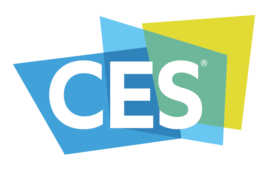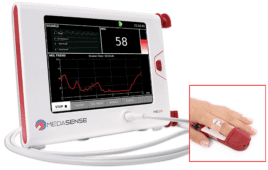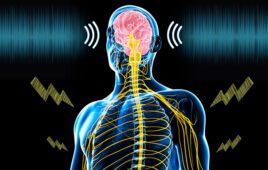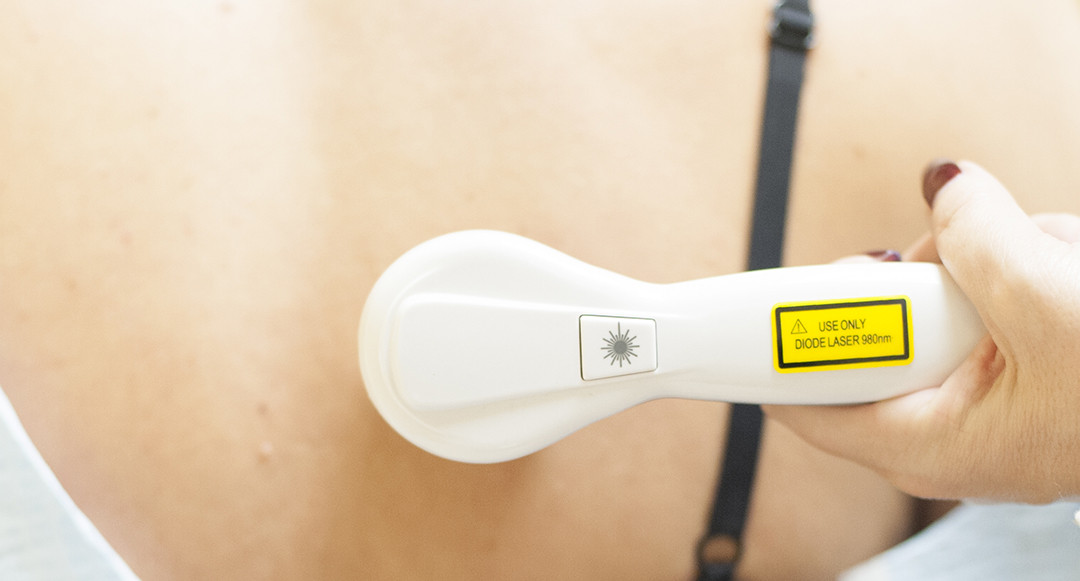
What is laser therapy?
Laser therapy has been discovered as a solution for patients suffering from acute and chronic pain, inflammation, neuropathies, and a host of range of motion challenges in addition to reducing scar tissue formation post surgically. The number of physicians exploring this treatment is expected to increase by 13% over the next four years. Unlike surgical lasers that destroy tissue with beam collimation, therapeutic lasers use beam divergence to bio-stimulate injured and dysfunctional tissue. Clinical studies have shown positive outcomes across the board when laser therapy was used.
How do therapeutic lasers work?
When the laser is placed against the skin, photon energy particles are emitted to the photoreceptors in the cell. This dynamic stimulates cellular activity, specifically changes in the mitochondria, resulting in a cascade of events such as DNA restructuring, increased oxygenation and blood flow, all resulting in ATP production.
By penetrating deep into the body’s soft tissue with natural light energy, the body is able to heal itself by stimulating cell growth, improving cell regeneration, invoking anti-inflammatory response, reducing fibrous tissue formation and stimulating nerve function.
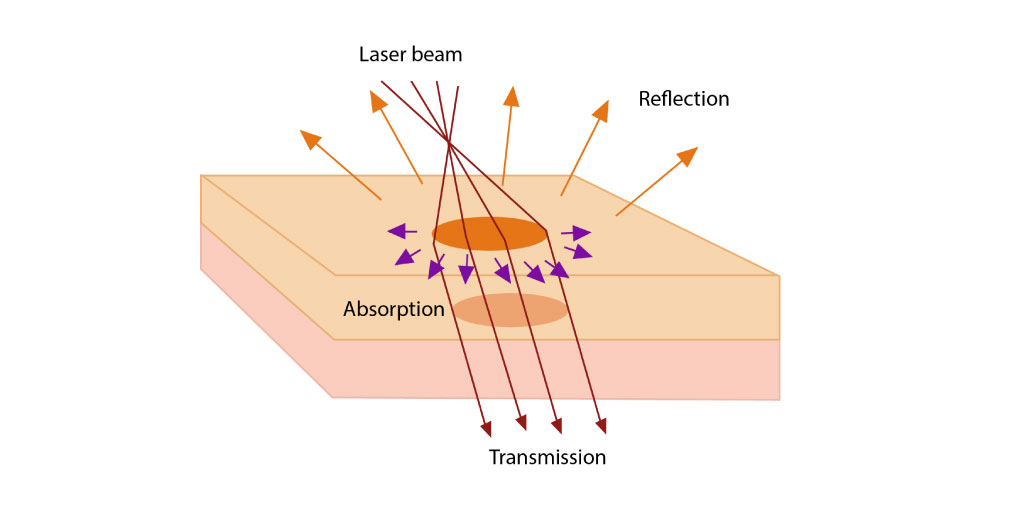
When the laser is placed against the skin, photon energy particles are emitted to the photoreceptors in the cell.
“Based on our experience in our pain clinic, the laser has been very effective in healing many different types of pain,” said Ernest Khoury, MD, Metro Pain Laser owner. “It is also a useful adjunct to the traditional modalities of pain relief.”
What can laser therapy treat?
Laser therapy has an anti-edemic effect, resulting in reduced swelling caused by bruising or inflammation. It is highly beneficial on nerve cells as it blocks pain transmitted to the brain, decreasing nerve sensitivity. Photons of light from lasers penetrate deeply into tissue and accelerate cellular reproduction and growth. Laser light will significantly increase the formation of new capillaries in damaged tissue that speeds up healing, closes wounds quickly and reduces scar tissue.
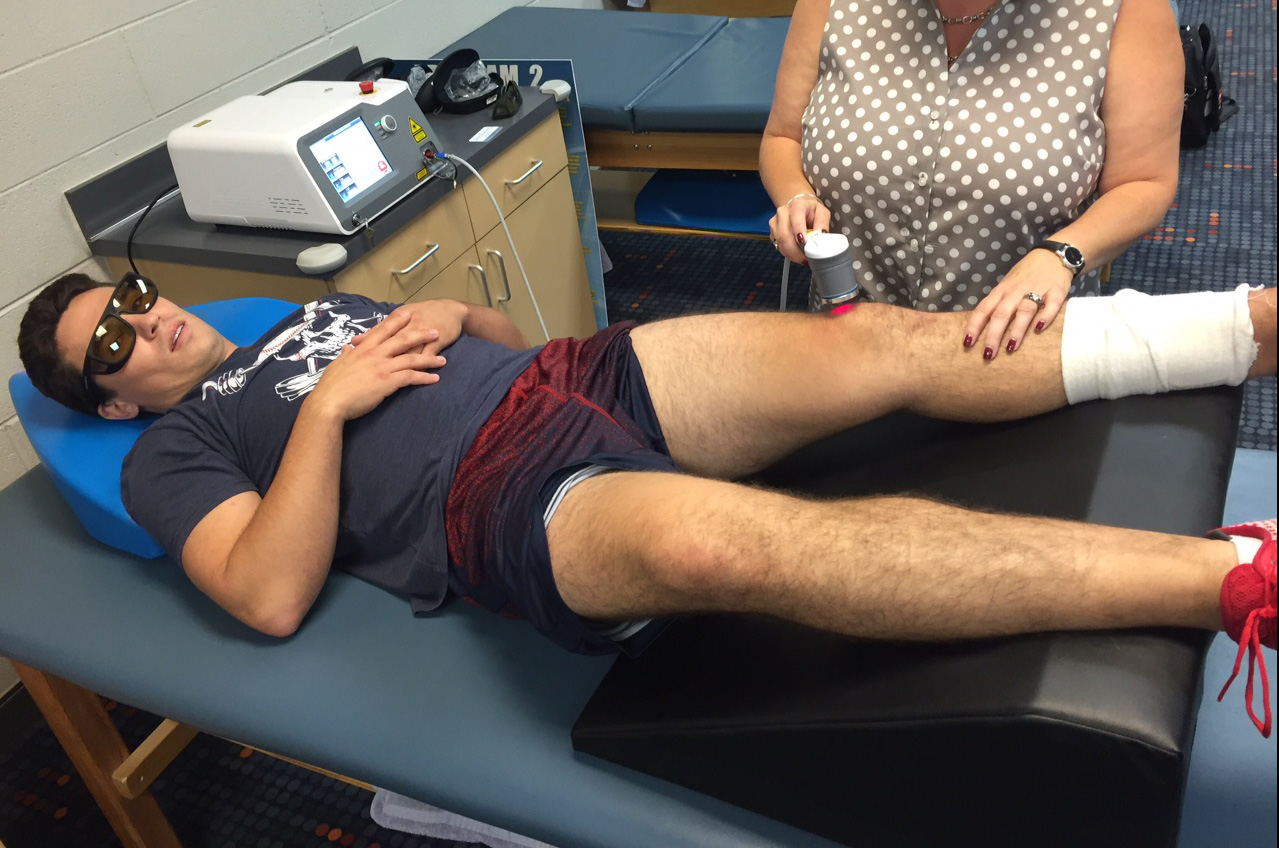
Professional baseball player Tony Wolters receiving laser therapy
Laser therapy also increases metabolic activity in patients by creating higher outputs of specific enzymes in addition to stimulating trigger and acupuncture points on a non-invasive basis providing musculoskeletal pain relief. The treatment reduces the formation of scar tissue following tissue damage from cuts, scratches, burns or surgery. Laser therapy will improve nerve function in patients experiencing numbness and in impaired limbs from damaged tissue. Laser light has a direct effect on immunity status by stimulation of immunoglobins and lymphocytes. Faster wound healing is often a result of laser therapy as laser light stimulates fibroblast development in damaged tissue.
“I recently had meniscus removal surgery. After two days of treatments, my experience with laser therapy was excellent,” said professional baseball player Tony Wolters. “My knee is stronger, and overall I am doing a lot better. It works! It gave me a lot more confidence in what I am able to do. I am definitely going to continue using this product throughout my career.”

